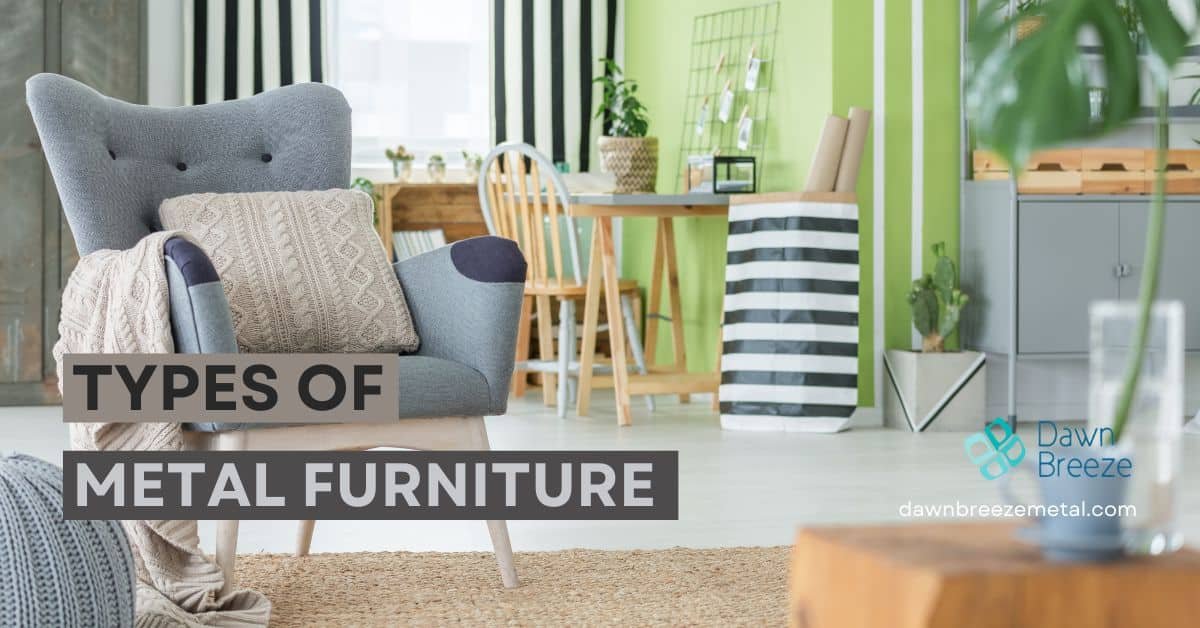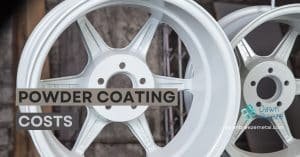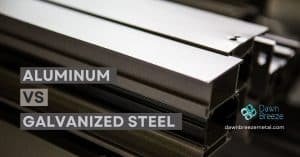Many people associate metal furniture with an industrial or commercial look. Indeed, metal furniture is common in these settings and has also become trendy in various design themes.
One of its most important advantages is durability. Metal furniture’s strength and ability to withstand forceful impacts and scratching make it long-lasting. Another benefit is that it doesn’t attract dust, making cleanup much easier than other materials.
Furthermore, modern developments have empowered metal with various finishes. This versatility makes it possible to use metal in several design styles, including modern, industrial, vintage, and rustic themes. Due to metal’s properties, designers can create fashionable and functional furniture that optimizes otherwise plain spaces.
Let’s take a closer look at different metal types, advantages, finishes, and answer some common questions in this article.
Metal Types For Furniture
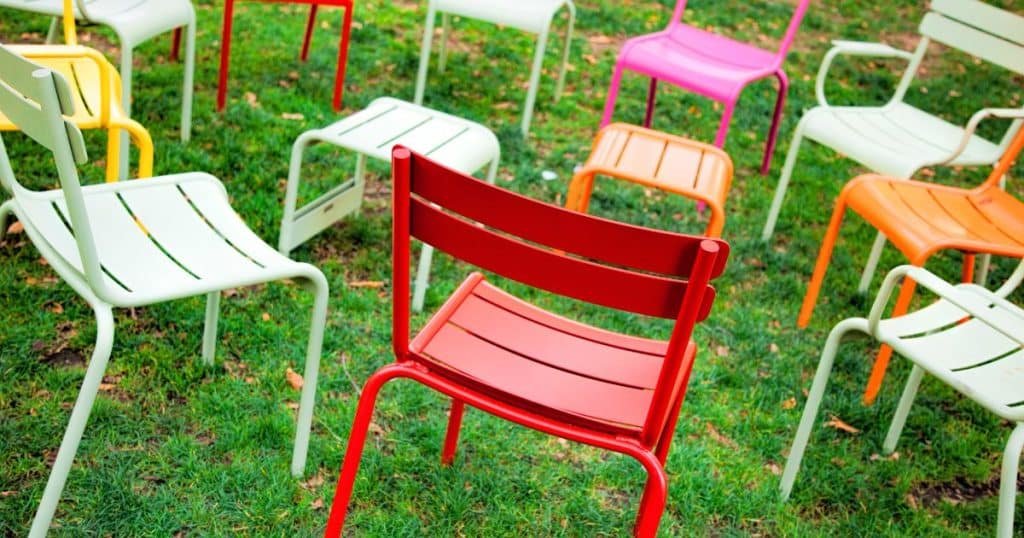
Aluminum and Steel
Aluminum and steel are the most widely used metals in furniture production. They are found in a wide range of pieces, from bathroom fixtures to outdoor seating.
Aluminum is a lightweight yet strong material, making it an ideal choice for furniture that needs to be easily moved or stored.
Steel, known for its impressive strength-to-weight ratio, is often used in furniture that requires structural integrity, such as heavy-duty shelving units and storage systems, dining tables and desks, and furniture structures. While regular steel can rust, many furniture pieces use stainless steel or coated steel to enhance corrosion resistance.
Check out the post “Patio Furniture – Steel Vs. Aluminum” for more information about comparing aluminum and steel in outdoor furniture applications.
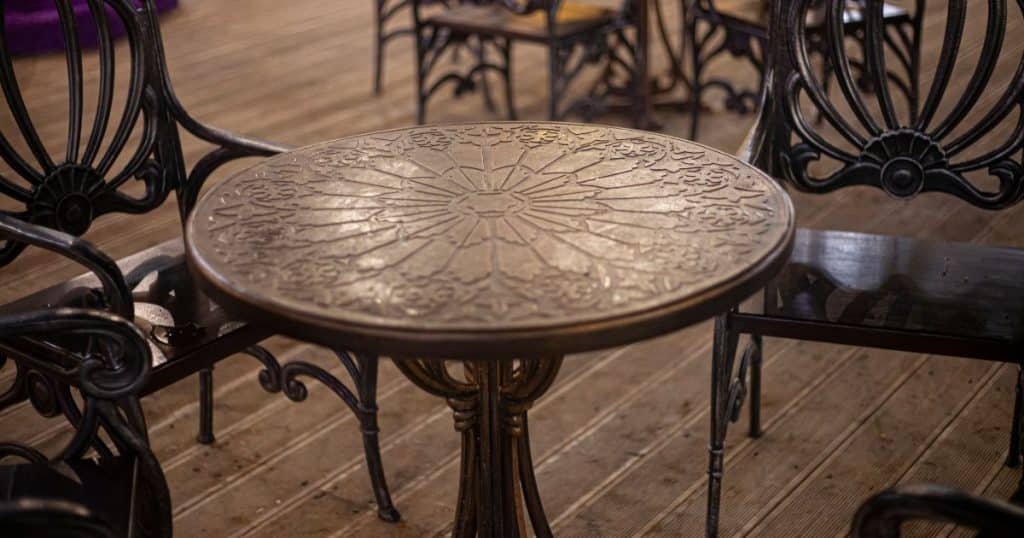
Wrought Iron
Wrought iron is a popular choice for metal furniture on the market. Its strength and flexibility allow it to be bent into various forms. This metal is also used in outdoor furniture because it is corrosion-resistant. Wrought iron furniture has a massive, solid look and often has detailed designs. While it can be used in conventional and modern design styles, it commonly gives a touch of sophistication and sturdiness to a room.
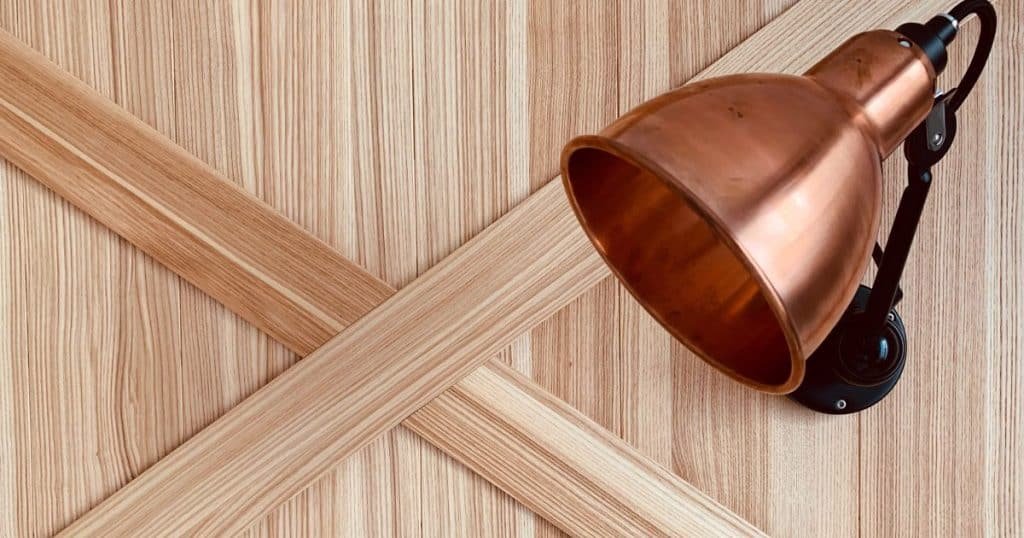
Solid Brasses
Brasses, which are copper and zinc alloys, provide a different look from other forms. They are solid, corrosion resistant, and easy to cast. With different proportions of copper and zinc, the brasses demonstrate different colors, strength, and ductility.
Furniture made of solid brass looks luxurious and has a warm tone. It is commonly used in secondary items such as occasional tables, lamps, lighting, and accessories, adding a classy touch. Polished brass furniture is a focal point that brings a statement into a room.
Manufacturers often combine these metals with other materials to optimize aesthetics and functionality. For example, aluminum frames paired with weather-resistant fabrics for outdoor seating, and steel structures complemented by wood or glass surfaces for a modern look.
Metal Furniture Styles
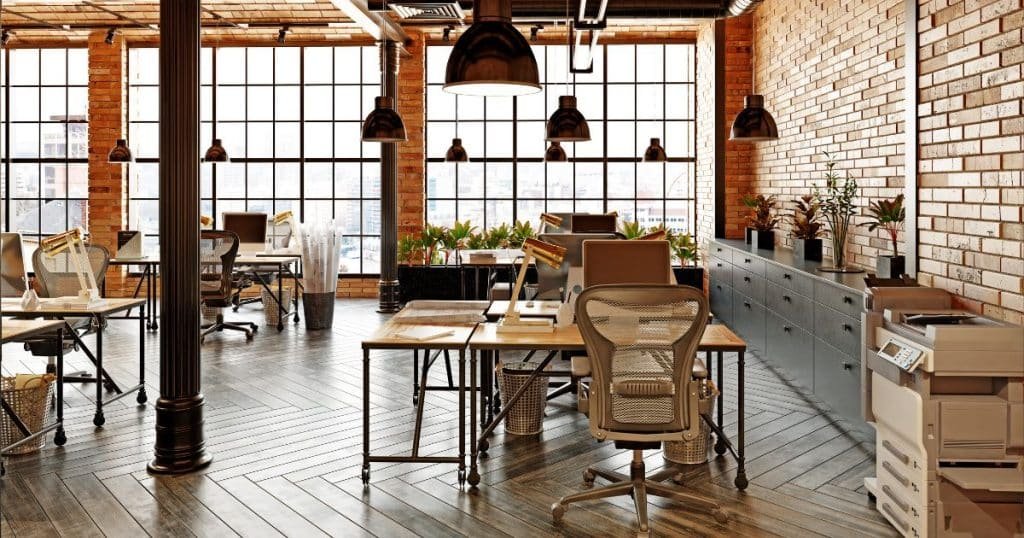
Industrial
Steel furniture features a very industrial look and is made from large-scale sheet metal. This style primarily focuses on rationality and practicality; the design follows lines, and ornaments are limited, while rivets or welds are shown.
A distressed finish is a typical part of the industrial look. These days, aluminum metal chairs commonly accompany leather or vinyl upholstery. With the design of a covered ceiling in modern and industrial spaces, it is appropriate to install furniture of metal industrial style.
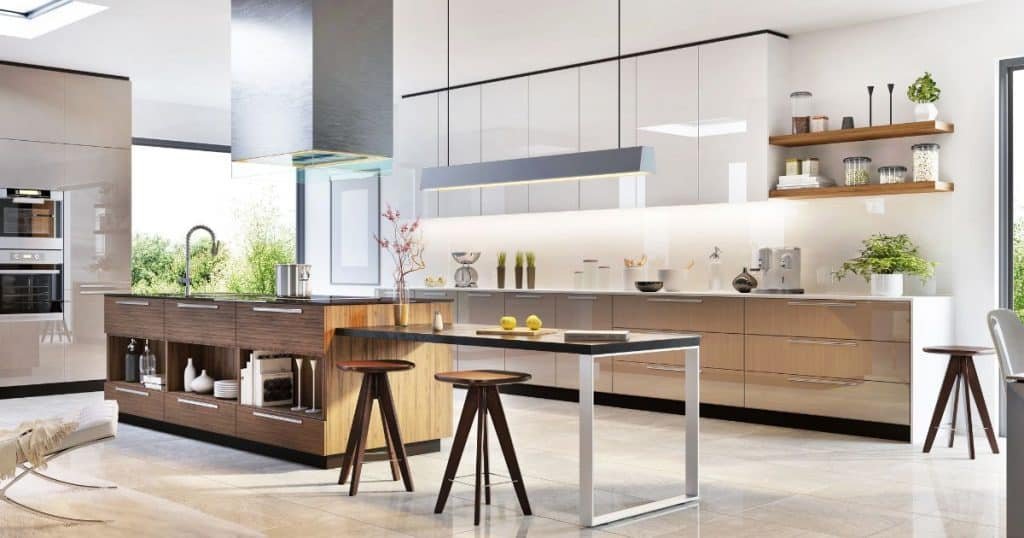
Modern
Contemporary metal furniture can best be described as minimalist. It has straight lines, angles, and smooth surfaces with a glossy or matte sheen. Typical metals used in this style include stainless steel, chrome, and aluminum.
They are flexible and perfectly blended with the current home decor. From accent tables to bed frames, they bring that modern twist into any room they are placed in. A brushed metal finish is one of the essential elements in a modern theme.
Vintage
Due to its design, antique metal furniture conveys a feeling of nostalgia. You can add detail, elaborate patterns, and even rugged finishes. Wrought iron is another iron type considered malleable, which is why it is used to make ornaments that seem like antiques for traditional homes. This style gives the impression of a romantic or eclectic nature. Vintage metal furniture consists of various pieces of furniture, such as chairs, tables, and lamps.
Contemporary
Modern furniture metal embodies sleek designs. The furniture and other items in the design focus on simple geometrics, free of ornament and sharp angles. Stainless steel, aluminum, iron, and such are some of the more popular metals in these modern artworks. These offers range from high to low gloss and generate elegant and smooth environments.
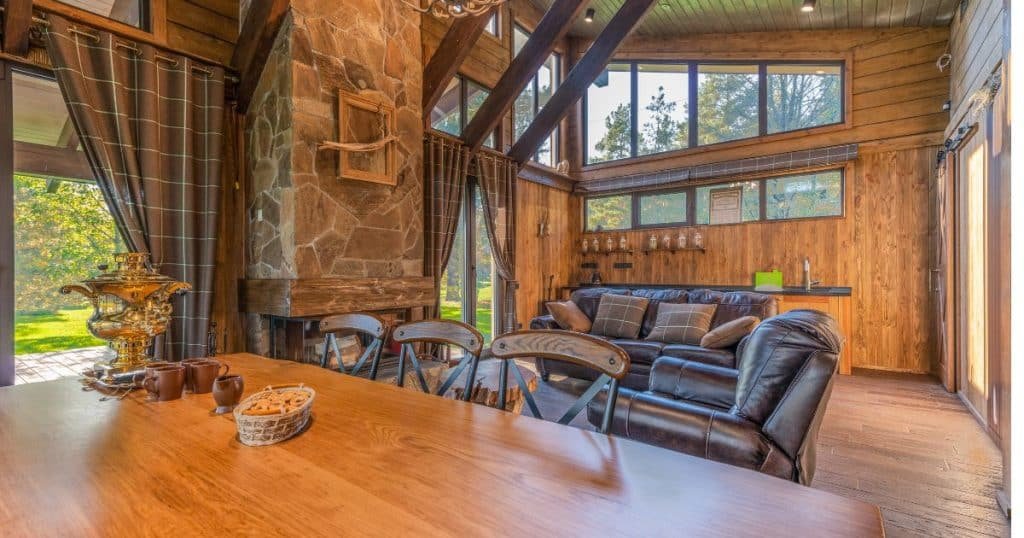
Rustic
Rustic metal furniture also features wood, but adding metal gives it a strong and durable appearance. This style encompasses stressed appearances, forged accents, metal and wooden combinations, and more.
Rustic metal furniture, from beds and side tables to fireplace accessories, decorations, and other home decor, offers warm and welcoming feelings. Simple metal pieces with an aged and weathered look help introduce industrial appeal to a bland environment.
Advantages Of Metal Furniture
- Durability and Longevity
It can also be seen that most metal furniture is much stronger and has a much longer life expectancy. It is usually designed to withstand a lot of use due to the materials used in its construction, such as steel, iron, or aluminum. Compared to wood or plastics, metal furniture has a very long life and does not require much maintenance. This implies that you spend less on it because it does not require frequent replacement.
- Versatility in Design
Metal is a very versatile material that can create many furniture designs. From straightforward and minimalistic to classic and business-like, metallic furniture is for any room. Metal can be given any number of appearances, meaning furniture makers can fashion very intriguing articles. Whether you prefer small or large furniture, metal furniture suits your taste in furniture.
- Easy Maintenance and Cleaning
Another significant aspect is its easy maintenance, especially when cleaning. While other furniture, like those made from cloth or wood, require special cleaners, metal furniture can be cleaned using only mild soap and a damp cloth. It does not pick up stains or spills and cannot support bacterial growth, making it relatively healthy around the house. Another benefit of metal furniture is that it does not retain foul odors.
- Strength and Stability
Metal furniture is durable and sturdy, so it is not unstable or easily broken. It can still accommodate heavy items such as dining tables and bookshelves. Metal furniture is more desirable than other materials because it usually supports a greater weight.
Metal Finishing Techniques
- Polishing
Polishing is an application used to improve the appearance and texture of metal to make it look shiny. Polished finishes smooth the metal, eliminate scratches and other marks and make the metal shine. Polishing can be done manually or with the help of special machines and materials.
Furniture made of polished finish metals provides a chic and contemporary appearance that can elevate the look of any space. It bounces light fixtures around, making the rooms feel brighter and cleaner. Despite the advantages, it is important to consider that polished surfaces are prone to showing fingerprints and smudges more easily than other finishes.
- Coating
The coating applies a layer of paint or other materials to cover up the metal, making it look better and last longer. Some of the most common coatings involve paints and powder coating. Paint is used to introduce color and offer a safeguard. Powder coating can provide various surface texture options, such as a hammered metal finish, matte finish, or gloss finish in different colors.
- Anodizing
Anodizing is a process through which the surface of aluminum can be reinforced and protected against various kinds of harm. It forms a tough skin on the aluminum surface that safeguards the material. Aluminum anodizing also improves its appearance by providing a shiny surface in various shades. This is done by placing the aluminum in a special liquid and then using electrical currents to alter the surface of the aluminum.
To learn more about the coating and anodizing techniques, check out the article “Color to Sheet Metal Work: Powder Coating, Painting, Anodizing.“
- Plating
Plating is depositing a very thin layer of one metal over another to improve its appearance, offer corrosion resistance, or improve its conductivity. Various methods, such as electrical or chemical, can be used. Brass plating enhances the metal’s appearance and contributes to increasing its durability.
- Patina
Patina is a condition that develops on metal surfaces over time and is usually greenish. It occurs when the metal comes into contact with the air and other related metal objects and substances. Thus, the same color can be a type of rust, but some people like it because it makes the metal look old and unique. Some metals, such as copper and bronze, form patina independently. It is also possible to artificially create a patina on metal.
To learn more about metal finishing techniques, see the post “9 Essential Metal Surface Finishing Techniques.”
FAQs
What are metal finishes?
Metal finishes are ways to change how metal looks, lasts, and is protected. You can polish, coat, anodize, plate, or patina metal.
What is a dark brown metal finish called?
A dark brown metal finish is often achieved through a chemical process called patination, commonly seen on copper and bronze.
What metal supplies are used in furniture?
Furniture is often made from steel, iron, aluminum, brass, copper, and wrought iron. People also use mixed metals to make different kinds of furniture.
Is metal good for furniture?
Yes, metal is great for furniture. It is strong, easy to clean, and looks good in many styles. It also lasts a long time.
What metal is used in tables?
Common table metals include steel, iron, aluminum, and stainless steel. The choice depends on table size, style, and intended use.
What metal is used in chairs?
Chairs are often made from steel, aluminum, or wrought iron. The metal used depends on the chair’s style and the weight it needs to hold.
Is metal furniture cheaper than wood?
Depending on the material used, design, and manufacturing process, metal furniture can be comparable in price to wood furniture.

